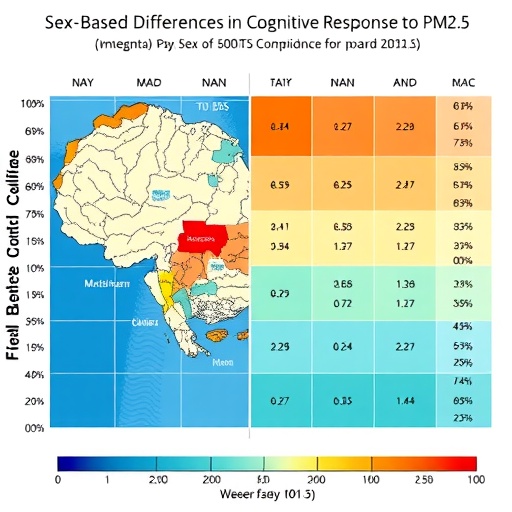
Researchers at the University of Cambridge have made a significant breakthrough in understanding canine obesity, particularly in the British Labrador retriever breed. Their recent study has unveiled multiple genetic variants that are linked to obesity in dogs, showcasing that these genetic factors are also relevant to obesity in humans. This research provides a unique lens through which the intricate relationship between genetics, appetite, and weight management can be examined in both species.
At the heart of this investigation lies the DENND1B gene, identified as the most prominent genetic variant associated with obesity in Labradors. The findings indicate that dogs carrying this variant possess approximately 8% more body fat compared to those without it. This genetic predisposition resonates with findings in human studies, where variations of the DENND1B gene have similarly been linked to obesity. Such connections not only illustrate the genetic parallels between dogs and humans but also suggest that insights gained from canine studies could have broader implications for understanding human obesity.
The significance of the DENND1B gene extends beyond mere statistics; it plays a crucial role in regulating energy balance through a brain pathway known as the leptin melanocortin pathway. This pathway is the body’s intricate system for controlling appetite and energy expenditure. By revealing this direct correlation between canine and human genetics, the study opens up potential avenues for targeted interventions in obesity management, both in pets and humans.
Alyce McClellan, a joint first author of the study, emphasized that despite the compelling findings, these genes should not be seen as straightforward targets for weight-loss medications. This caution stems from the gene’s broader biological implications. The research highlights the essential nature of specific brain mechanisms in regulating our desires and behaviors related to food intake and weight. Given the complexity of these interactions, any pharmacological approach must be designed with careful consideration of these fundamental processes.
The study also assessed behavioral aspects of Labradors, focusing on their relationship with food. Interestingly, owners observed that dogs with a higher genetic risk for obesity exhibited a more pronounced interest in food and were less likely to be selective eaters. This observation is critical, as it echoes findings in humans; individuals with a genetic predisposition for obesity often struggle with appetite regulation. The research illustrated how genetic factors might manifest in behavioral tendencies, leading to an increased likelihood of overeating in dogs at genetic risk.
Preventative strategies were also examined, revealing that consistent management of diet and exercise could effectively mitigate obesity risks in genetically predisposed dogs. Owners who diligently controlled their pets’ food intake and ensured adequate physical activity succeeded in preventing weight gain, showcasing the importance of active engagement in the dog’s health. This parallels findings within human populations, where adherence to strict fitness and dietary regimens can counteract genetic risks for obesity.
The findings from this extensive research highlight that dog owners should not equate a slim dog with responsible ownership. Dr. Eleanor Raffan, the lead researcher, pointed out that the challenges faced by dogs and humans alike in managing weight due to genetic predispositions are not reflective of moral failings. The correlation between the environmental availability of food and the capabilities required to resist overeating underscores a shared struggle across species.
Conducting the study involved recruiting numerous Labrador owners, during which various measures of body fat and eating behaviors were thoroughly assessed. Genetic analysis of DNA samples shed light on which specific genes were most commonly associated with increased body fat amongst participating dogs. This direct comparison between canine obesity data and genetic profiles enabled researchers to pinpoint relevant genes with higher precision.
The issue of obesity is not restricted to the canine population alone; it reflects a growing public health dilemma in humans as well. With an estimated 40-60% of pet dogs falling into the overweight or obese categories, the associated health risks mirror those faced by humans. By illuminating the genetic underpinnings of obesity in dogs, the potential for advancing our understanding of similar mechanisms in humans becomes increasingly plausible.
To combat these tendencies, veterinarians and researchers suggest practical methods that can help manage the challenge of canine obesity. Strategies such as utilizing puzzle feeders, spreading out food portions throughout the day, or incorporating physically engaging toys can effectively distract dogs from their instinctual hunger cues. These practical solutions could significantly enrich the lives of these pets while concurrently addressing health concerns associated with weight gain.
The convergence found in this study between canine genetics and human obesity reinforces the relationship shared by these two species. The study serves as a vital reminder of how genetics can predispose individuals to common challenges, such as obesity, regardless of the species. By continuing to explore these genetic links, researchers may uncover new insights that could fundamentally alter how we approach obesity in both dogs and humans alike.
In summary, the discovery of the DENND1B gene’s role in obesity not only expands the field of genetic research but also paves the way for a deeper understanding of physiological mechanisms involved in appetite control. As our knowledge broadens, so too does our capability to innovate preventive measures and treatments for obesity, setting the stage for healthier futures for both dogs and their human companions.
Subject of Research: Animals
Article Title: Canine genome-wide association study identifies DENND1B as an obesity gene in dogs and humans
News Publication Date: 6-Mar-2025
Web References: http://dx.doi.org/10.1126/science.ads2145
References: Not provided
Image Credits: Credit: University of Cambridge
Keywords: Canine obesity, DENND1B gene, genetics, appetite regulation, Labrador retrievers, energy balance, leptin melanocortin pathway, diet management, obesity treatment, human obesity.
Tags: appetite regulation genesBritish Labrador retriever obesitycanine obesity researchDENND1B gene and obesityenergy balance regulation in dogsgenetic variants linked to obesityhuman obesity geneticsimplications of dog studies for human healthleptin melanocortin pathwayobesity in Labradorsrelationship between genetics and weightunderstanding canine and human obesity





